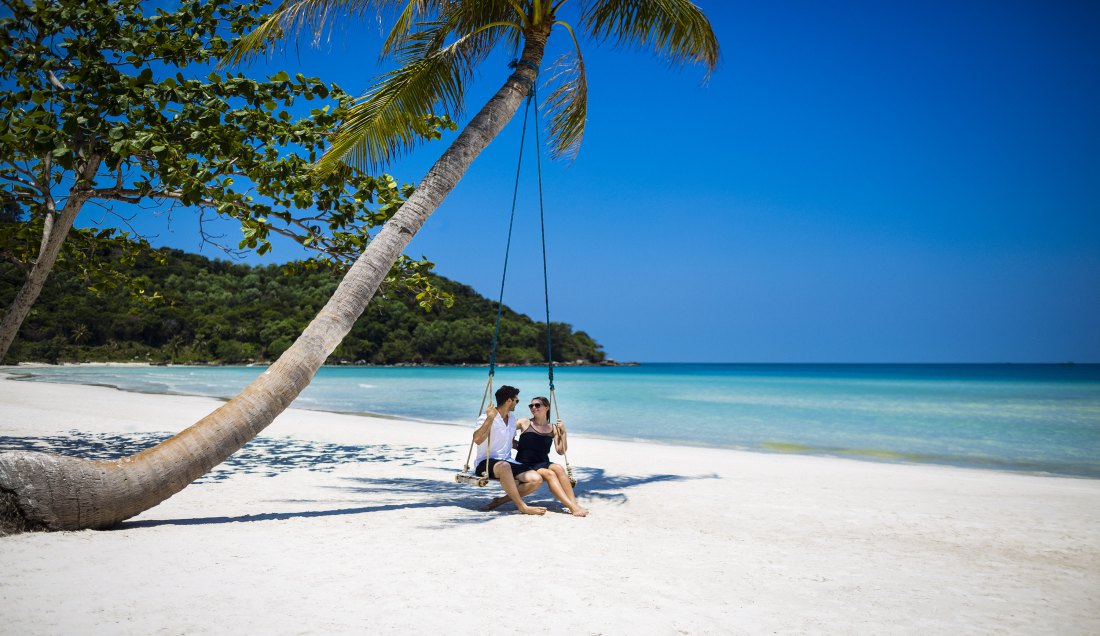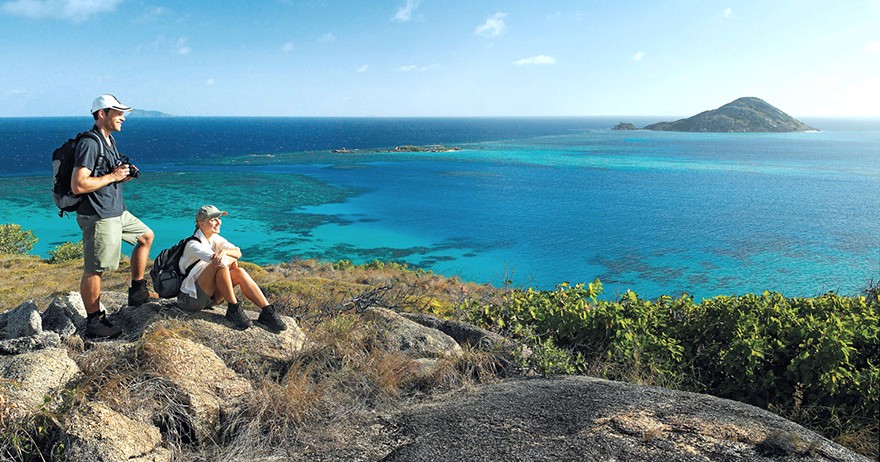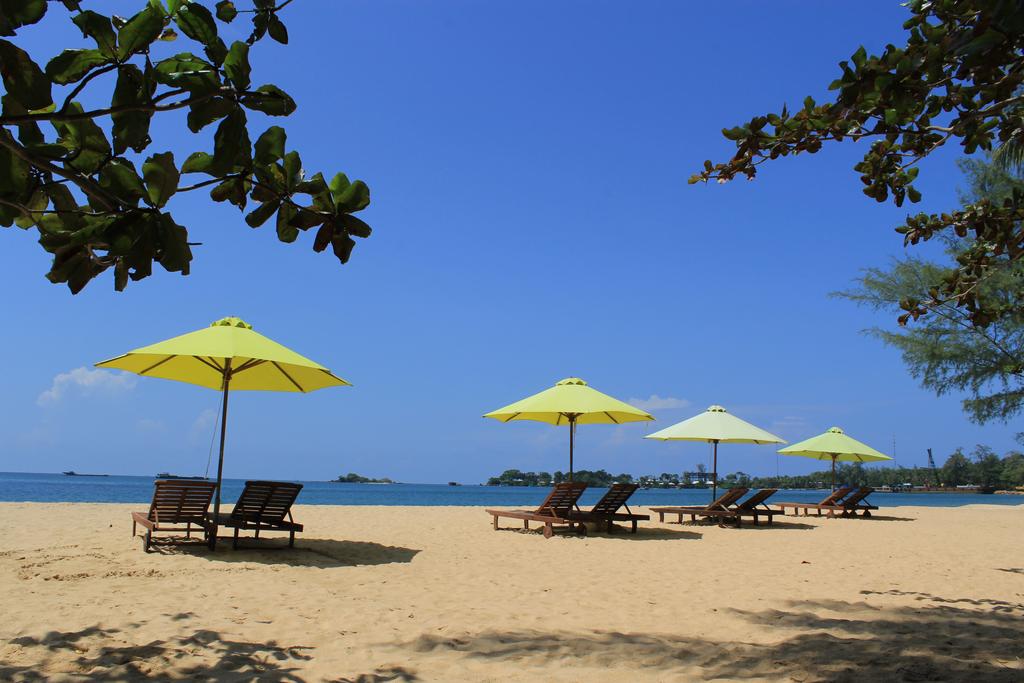By Lawrence Haywood, Mar 15, 2025
As one of forerunners in the race to become Vietnam’s top beach destination, Phu Quoc Island is pretty well-equipped to take the first prize. Over 10 pristine beaches offer dozens of kilometers of flawless white sand around the island, conveying the ultimate image of paradise that acts as a vital highlight to any Vietnam beach holiday.
The question of when is the best time to visit Phu Quoc Island is not an easy one to answer, as Vietnam’s largest island sits relatively close to the equator, bestowing it with a fairly consistent climate year-round yet still the potential for vicious rainstorms and searing heat. As with all destinations in the south of Vietnam, Phu Quoc Island can be split into two seasons characterized by one big difference – the amount of rain it receives.

Enjoy the sunshine in Phu Quoc beach
Book those plane tickets as quickly as possible, the dry season in Phu Quoc Island beckons travelers from far and wide to its immaculate beaches and placid waters, all lying under a light blue sky speckled with non-threatening white clouds. The dry season is undoubtedly the best time to visit Phu Quoc because of the resplendent natural show that the island puts on for its visitors. Combine Ho Chi Minh City & Phu Quoc Tour Beach Break to have the best Vietnam exploration!
It’s unlikely you’ll feel a huge difference in temperature when stepping off the plane or boat onto Phu Quoc Island, considering that all transport here comes from very nearby sources. That is to say, you will still be sweating, as even the dry season in this part of the world can be a swelteringly hot affair. At Phu Quoc in December, you should be looking at a manageable 29°C, rising gradually to 32°C as the season begins to turn. This is just about in most tourists’ comfort zones, but it does mean that all-day beach visits might need to be accompanied by some portable shade, as the openness to Phu Quoc’s beaches makes it hard to find a cool shadow at times.
Hoping for the minimum temperatures is what most tourists do during the dry season, as these can be a comfortable 26°C or 27°C throughout January and February. This is when the best time of year to visit Phu Quoc Island is on display, providing the opportunity of an ideal South Vietnam beach vacation for those struggling with the winter in the northern hemisphere and those sweating through a heat wave during the southern hemisphere summer. On the other hand, highs can reach up to 35°C as the dry season makes preparations for the wet, providing a scorching holiday for anyone lingering around at the end of May.

Click now to hop on your Vietnam beach holidays
According to the review Phu Quoc island, the idyllic pictures that tourists see of Phu Quoc Island were almost definitely taken during the dry season, when just a few white clouds dot the sky and the likelihood of them shedding any watery loads is pretty minimal. The season starts with a reasonable 120mm of rain, with a very reasonable 3 days in which it falls, dipping into February and then rising again in May as the dark clouds of the rainy season start to amass. The best time to visit Phu Quoc for dry weather is during the rainfall trough in February, where a paltry 30mm falls over 1 or 2 days, giving you little reason to move from the beach as the pitiful rainfall is accompanied by the island’s lowest, and therefore best, temperatures.
There’s a fairly steady climb between December and May, with the sun making itself known for about 6 hours per day in December, becoming more confident until an almighty showing in May blesses visitors with about 9 hours per day. These are the sunniest months in the Phu Quoc Islands, allowing tourists to soak up all of the verdant nature around the archipelago with a background of sunshine and blue skies. Outside time is highly prized, which is just as well, as outside time is really the only time worth staying on Phu Quoc Island.

Make use of sunshine to join various activities in Phu Quoc Island
You are spoiled for choice during the peak season in Phu Quoc. The island explodes into life with the arrival of many tourists seeking the perfect Vietnam beach retreat, and finding it with ease on the golden shores. The 20km white-sand stretch of Long Beach becomes the hub of the island, with most of the activity revolving around the coastline next to the hotels.
• Go on a safari – The Vinpearl Safari and Conservation Park is situated north of the island, comprised of a zoo and an open-terrain safari. The animals here are well looked after, having free space to roam around their semi-natural habitats. This is especially the case with the safari, which houses lions, giraffes, elephants, and many more, making it one of the ideal family activities in Phu Quoc Island.
• Take a hike – Just to the east of the safari is Phu Quoc National Park, which makes up a large portion of the Ken Giang Biosphere Reserve. This UNESCO-designated park is teeming with endemic wildlife, both in its waters and around the tall trees that comprise its forests. Hikes through the woodland can reveal some of Phu Quoc’s most amazing nature, including waterfalls, mangrove forests, vast seas of coral, and the wealth of interesting monkeys, hornbills, and manatees that call it all home.
• Nothing – Simply retiring to the beach to relax for the day is certainly the most popular of Phu Quoc’s highlights. The best time to visit Phu Quoc is when its beaches are sparkling, pellucid waters are shimmering and the palm trees are dancing beneath a cloudless sky. Paradise indeed.
• Go island-hopping – If one island isn’t quite enough, Phu Quoc has a host of smaller islands to its south where the same resplendent beauty is exhibited proudly, and yet to no one. The 13 uninhabited landmasses around the archipelago are what real Vietnam island retreat dreams are made of and can be visited via a charter boat cruise, which delivers customers to heavenly scenes straight out of a movie.
| Pros | Cons |
Best year-round temperatures Very little rain Long, sunny days Plenty of activities to engage in Picture-perfect scenery True island escape atmosphere | More crowded beaches Higher prices for accommodation Higher prices for tours |
May covers both seasons here because of its tumultuous nature, occasionally dry season but occasionally wet, separating the two halves to Phu Quoc’s weather that is so wildly different. The rainy season kicks the island to the next level, with scorching temperatures, fervent rainfall, and days when you’ll wonder if the sun still exists behind all that cloud. That might be a bit of an exaggeration, but the best time to travel to Phu Quoc Vietnam is certainly not the wet season. There is still plenty of beauty to be found, regardless of the weather, so don’t be too dispirited if you have to travel during this time.
Depending on where you are from, the wet season temperatures in Phu Quoc may or may not present a problem. A fairly flat rate of 31°C is certainly not the worst heat to be felt in the country, but it is the unrelenting consistency that usually gets to tourists in the end, with many consecutive months presenting a high, stagnant temperature with very little reprise. Entire days can still be spent on the beach, as long as minimal movement is involved, or at least a sizeable chunk of time dedicated to swimming in the cooling sea.
If avoiding the wet season is not an option, then visiting Phu Quoc in November might be your best bet, as temperatures here dip slightly when the dry season begins to take the reins. 29°C is expected at this time of the year, creating much-improved conditions for the island’s outdoor activities.
It may not shock you to hear that rainfall during Phu Quoc’s wet season is pretty substantial. If you arrive in Ho Chi Minh City before heading to Phu Quoc, then you very well see the extent of what you should expect on the island. It’s hard to pinpoint an exact month when the clouds of Phu Quoc unleash their watery fury the most, as their levels fluctuate greatly year-on-year, but any visits between July and September are likely to receive the biggest soaking. July illustrates this well, as 180mm in 2016 became a torrential 790mm in 2018, a staggering jump and one that left tourists wringing their clothes out from the unexpected storms. It’s best to play it safe and avoid visiting Phu Quoc between July and September if you can. So, be careful to decide how long to spend in Phu Quoc during this period!
The dip in sunshine hours during Phu Quoc’s wet season is not as pronounced as it is in other parts of Vietnam. Its proximity to the equator gives it a fairly stable length of day that doesn’t fluctuate much throughout the year. The sunniest months in Phu Quoc Island can even be found in the wet season on the odd occasion, and about 9 hours of sunshine per day have been recorded before over the hump of July to September.
May is typically the sunniest month in South Vietnam and this is reflected on Phu Quoc, where clouds are sometimes absent for entire days at a time. Overly relaxed visitors should be careful though, as dark clouds can congregate in the blink of an eye and release a torrent of rain in a short amount of time, creating a welcome break from the heat but putting a bit of a dampener on lazy afternoons by the beach. As with most of Vietnam though, life is still exciting during these months, and the potential for a deluge should not stop you from going to Phu Quoc in the wet season.

Sunbathing is a great activity in Phu Quoc
The wet season in island Phu Quoc seriously limits your options in terms of viable activities as the vast majority of things to do involve being outside. However, plenty of Phu Quoc’s best attractions still remain open if you don’t mind taking the chance of an afternoon deluge disrupting your holiday in one of Vietnam’s top beach destinations.
• Take a cautious trip to the beach – It would be outrageous to visit Phu Quoc Island and not enjoy the wealth of beautiful beaches on offer here. The wet season can indeed make beach visits a bit more of a tentative affair, as tourists should be ready to pack up and run as soon as the rain starts falling, but this shouldn’t get in the way of your good time. Bring some rain-protective essentials and try your luck!
• Visit Phu Quoc Prison – It might not promote the same tropical holiday atmosphere as the many natural attractions in Phu Quoc, but the island’s prison is a worthy and educational stop that encapsulates some of the dark history that the island went through during the Vietnam War. The prison’s nickname of ‘coconut tree prison’ masks a lot of the horrors that took place here, where as many as 40,000 captured North Vietnamese troops and idealists were imprisoned and brutally tortured.
• Sip on a coffee in Duong Dong – Phu Quoc’s largest town is Duong Dong, but the term ‘largest’ should really come with an asterisk in this case. The tiny town offers a smattering of cafes and opportunities for people-watching, but not a whole lot more. Sitting down for a coffee is a good idea before going shopping for tours throughout the town
• Recline in your room – It’s not all about being outside in Phu Quoc Vietnam. Usually, beach resorts around the island are of high quality and are located right on the beachfront, giving you a fantastic view of the potentially stormy nature outside from the security of your room. Hotels in Phu Quoc are always improving and many already contain a wealth of indoor activities to keep visitors entertained during the rainy season.
Pros | Cons |
Lower prices for accommodation Lower prices for tours Acceptable weather at times Great sunshine hours | Largely tumultuous rainfall Consistent, scorching heat Inability to visit main attractions |